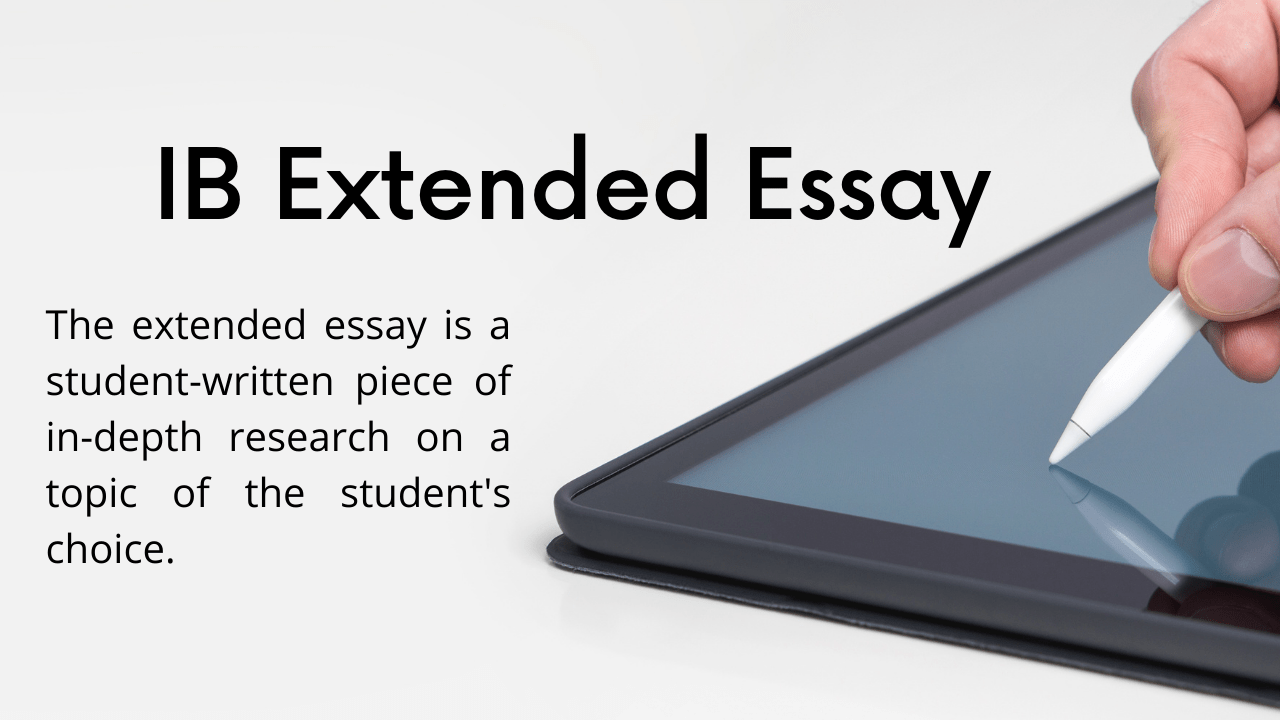The extended essay is a student-written piece of in-depth research on a topic of the student’s choice. This in-depth research offers the opportunity for IB students to investigate the topic of their interest and choice, in the form of a 4 000 – word long piece of independent research.
A student has to select an area of research from Diploma Programme subjects, become acquainted with the independent research. This independent research promotes high level of research and writing skills, intellectual discovery and creativity. The extended essay provides students with an opportunity to engage in personal research on a topic of choice, under the guidance of a supervisor.
In this article, we are answering the following questions:
· What are the aims of the extended essay?
· Is there a set structure for an extended essay?
· How does the extended essay help students?
· What is the role of a supervisor?
· How are the extended essay and ATL skills, and IB learner profile connected?
· How are the extended essays assessed?
What are the aims of the extended essay?
Extended essay essays aim to engage students in independent research with intellectual initiative and rigour, develop research, thinking, self-management and communication skills and reflect on what has been learned throughout the research and writing process
Is there a set structure for an extended essay?
The extended essay is a type of academic writing that requires students to present their knowledge, insight and understanding of an issue, topic or subject. Students need to write an introduction that motivates the reader to read the rest of the essay. They should also consider different types of thesis statements for their essays. The body paragraphs should be developed with evidence and analysis in order to support the thesis statement. The conclusion should summarize what you have just written about in your essay. Finally, the essay should answer the research question with unanswered questions if any. Thus, extended will follow the following format.
Six required elements of the extended essay:
- Title page
- Contents page
- Introduction
- Body of the essay
- Conclusion
- References and bibliography
How does the extended essay help students?
The extended essay is an inquiry-based task that allows students to explore topics in depth and intending the students to fully explore an issue or topic that interests them in-depth, rather than following a pre-fabricated assignment.
Through their research, students can learn not only about the topic of their research, methodology, and critical thinking, but they can also learn important transferable skills such as time management, perseverance, resilience, reflections, and decision-making. Most of extended essays are based on the secondary data, where the students are required to collect relevant information/data to write a high-quality research paper. In addition to finding the information, it’s important to organize it in a logical and cohesive manner. Finally, there’s the task of putting together all of their thoughts into an organized and coherent essay that they can be proud of.
What is the role of a supervisor?
The extended essay is an independent task, guided by common criteria across all subjects. Although supervisors play an important role in guiding students to choose areas of research that allow them to demonstrate mastery of the subject, the student is ultimately responsible for selecting a topic. The supervisor should work with the student to determine if their chosen topic is appropriate for the extended essay and provide guidance on how best to approach it. However, throughout the research process supervisors can offer guidance and support—within the parameters of the task—at different levels for different students.
The extended essay: ATL skills and IB learner profile
Embedded within the process of writing the extended essay are many elements of the approaches to learning (ATL). While research skills are fundamental to successful completion, other ATL skills are implicit in the task. As the extended essay is an independent task, it requires students to self-manage by developing organization and affective skills, including mindfulness, perseverance, resilience and self-motivation. The process of researching and writing the extended essay represents the learner profile in action. Being open-minded, principled and reflective are aspects of the student experience within the extended essay. The extended essay provides students with the opportunity to become more internationally minded by engaging with the local and global communities on topics of personal inquiry. The development of the learner profile attributes helps to unify IB learners in a larger community in this shared experience.
How are the extended essays assessed?
All extended essays are externally assessed by examiners appointed by the IB. They are marked on a scale from 0 to 34.
Criterion A: focus and method (0- 6 marks)
Criterion B: knowledge and understanding (0- 6 marks)
Criterion C: critical thinking (0- 12 marks)
Criterion D: presentation (0- 6 marks)
Criterion E: engagement (0- 6 marks)
Total: 34 marks
The score a student receives relates to a band. The bands are:
A – work of an excellent standard.
B – work of a good standard.
C –work of a satisfactory standard.
D – work of a mediocre standard.
E – work of an elementary standard.
Thus, the extended essay is a challenging and rewarding experience for all IB students, which prepares students for different pathways beyond the Diploma Programme by developing skills valued by both tertiary education and employers. The extended essay embodies the essence of an IB education in developing inquiring, critical, lifelong learners.
Source: Extended Essay Guide, Published by International Baccalaureate Organization (February 2016)
Reference research questions (RQs) for Business Management extended essay
Note: Names used in these questions are for reference only. They do not reflect any real life business.
- To what extent has Subar’s business strategies been successful to get a competitive edge over its rival cab service ‘ POLA’ in Indian urban cab service segment?
- To what extent has Subar’s business strategies been successful to get a competitive edge and presence over its rival cab service ‘ POLA’ in Indian urban cab service segment during the years 2015 – 2019?
- “To what extent did Desla’s organizational culture, values, and leadership practices play a role in the company’s rapid success in the US during the years 2015 – 2019 and creating values for its stakeholders?”
- “To what extent has the joint venture between Global Constructions Corporation and Excel Construction Limited proven to be viable in terms of creating stakeholder value in India?
- To what extent did the change in leadership of MiceJet (a low cost airline), save the company from the brink of bankruptcy and navigate successfully in terms of profits earned?
- To what extent has the strategic marketing model of K-Plus given it a competitive edge in the premium smartphone segment in India despite the strong presence of Ziva Smart Phones?
- “How successful has the Joint Venture between White Coffee Corporation and Mata Global Beverages Limited been as a growth strategy for White Coffee Corporation to enter the Indian market?”
- “To what extent can Nicrosoft’s success be attributed to its leadership style and organizational culture?”
- To what extent did the marketing strategies of Doyota help to increase its brand positioning and market share in the automobile industry in India since 2018?
- To what extent, the strategic marketing model of Eatery has given competitive edge over its competitors in the Indian online food ordering and delivering platform?
- “To what extent can SpiceJet’s success be attributed to the change in leadership regarding growth performance and adding value to its shareholders?
- To what extent is the merger between Connect Group Plc and Smart Connect Plc considered to be successful in terms of sales revenue, subscriber base, and market share in the Indian telecommunication industry?
- To what extent can the leadership style, corporate culture, and business strategies of Doyota Motor Corporation (DMC) be deemed to create values for its stakeholders?
- To what extent can leadership and management styles at Keliance Industries Limited ( KIL) attract long term investors to invest in this Indian multinational conglomerate?
- To what extent did Design Pro’s new software ‘D-Design 2K prove to be successful launch in terms of sales revenue, profit margin and market share in Singapore?


